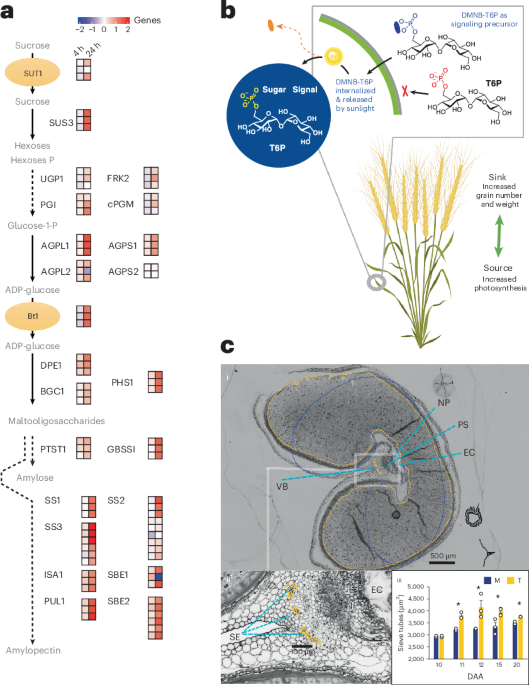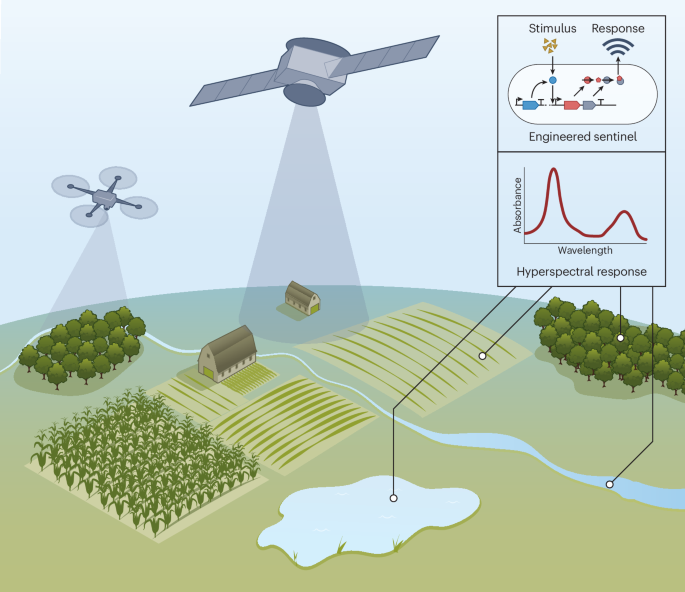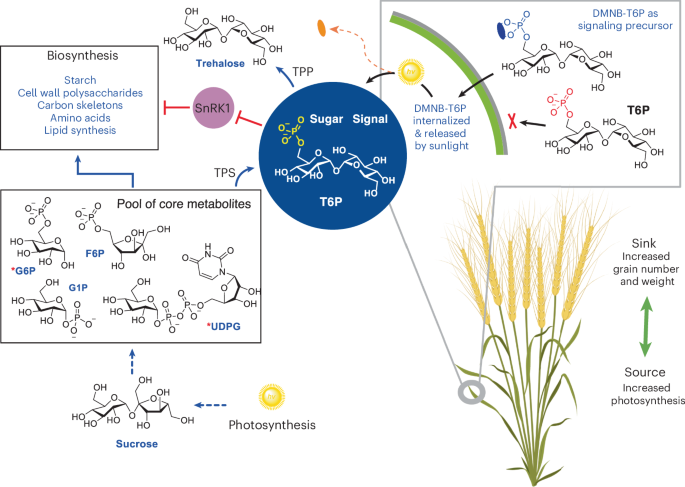Now Reading: Application of a sunlight-switched sugar signal increases wheat yield in the field
-
01
Application of a sunlight-switched sugar signal increases wheat yield in the field
Application of a sunlight-switched sugar signal increases wheat yield in the field

- Research Briefing
- Published:
(2025)Cite this article
Subjects
Crop yield improvement has plateaued in the past three decades, owing largely to genetic bottlenecks in the germplasm of staple food crops. We used a chemical intervention method that increases yield in the field, providing a sustainable means to improve yields of wheat and potentially other crops.
This is a preview of subscription content, access via your institution
Access options
Access Nature and 54 other Nature Portfolio journals
Get Nature+, our best-value online-access subscription
24,99 € / 30 days
cancel any time
Subscribe to this journal
Receive 12 print issues and online access
195,33 € per year
only 16,28 € per issue
Buy this article
- Purchase on SpringerLink
- Instant access to full article PDF
Prices may be subject to local taxes which are calculated during checkout

References
-
Gerber, J. S. et al. Global spatially explicit yield gap time trends reveal regions at risk of future crop yield stagnation. Nat. Food 5, 125–135 (2024). A review article that identifies the need for research into new technologies to increase attainable crop yields.
-
Lichthardt, C., Chen, T.-W., Stahl, A. & Stützel, H. Co-evolution of sink and source in the recent breeding history of winter wheat in Germany. Front. Plant Sci. 10, 1771 (2020). An analysis showing that successful wheat breeding for yield has increased photosynthetic activity around anthesis (source) and grain numbers per spike (sink) together.
-
Schluepmann, H., Pellny, T., van Dijken, A., Smeekens, S. & Paul, M. Trehalose 6-phosphate is indispensable for carbohydrate utilization and growth in Arabidopsis thaliana. Proc. Natl Acad. Sci. USA 100, 6849–6854 (2003). This paper showed the indispensable requirement for T6P in plants.
-
Griffiths, C. A. et al. Chemical intervention in plant sugar signaling increases yield and resilience. Nature 540, 574–578 (2016). This paper demonstrated the concept of designed signaling precursors under greenhouse conditions.
-
Nuccio, M. L., Paul, M., Bate, N. J., Cohn, J. & Cutler, S. R. Where are the drought tolerant crops? An assessment of more than two decades of plant biotechnology effort in crop improvement. Plant Sci. 273, 110–119 (2018). A review article that summarizes the recalcitrance of drought tolerance in crops to improvement by plant biotechnology.
-
Menegat, S., Ledo, A. & Tirado, R. Greenhouse gas emissions from global production and use of nitrogen synthetic fertilisers in agriculture. Sci. Rep. 12, 14490 (2022). An analysis that highlights the large mitigation potential for greenhouse gas emissions from reducing overall production and use of synthetic nitrogen fertilizers.
Additional information
Publisher’s note Springer Nature remains neutral with regard to jurisdictional claims in published maps and institutional affiliations.
This is a summary of: Griffiths, C. A. et al. Membrane-permeable trehalose 6-phosphate precursor spray increases wheat yields in field trials. Nat. Biotechnol. https://doi.org/10.1038/s41587-025-02611-1 (2025).
Rights and permissions
About this article
Cite this article
Application of a sunlight-switched sugar signal increases wheat yield in the field.
Nat Biotechnol (2025). https://doi.org/10.1038/s41587-025-02667-z
-
Published:
-
DOI: https://doi.org/10.1038/s41587-025-02667-z























